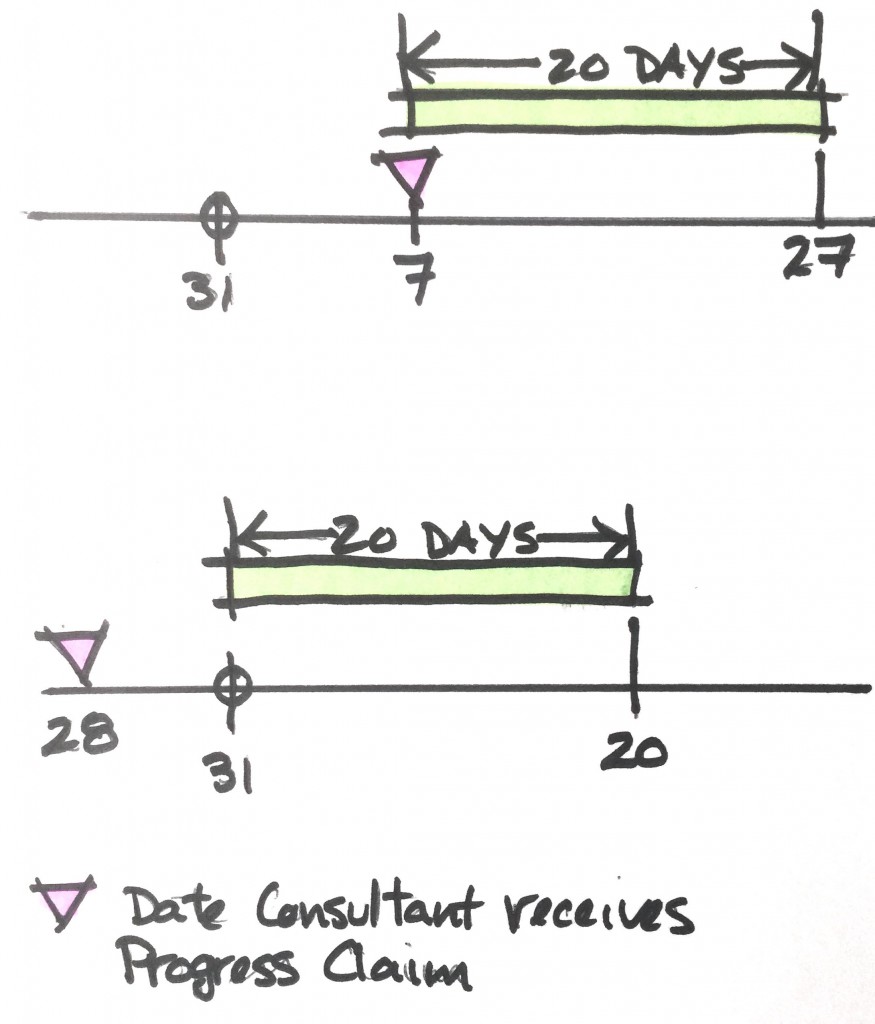
Money makes the world go round. This is particularly true when it comes to a construction project. Think of all the different stakeholders involved and the different financial requirements of each:
- Employees
- Sub Contractors
- General Contractor
- Owners juggling the financing
- Consultants and Project Managers
- Banks (covering everyone from employee mortgages, to general contractor loans, to project financing)
- Insurance and bonding agencies
- Material and equipment suppliers and manufacturers
And the list goes on.. so it should come as no surprise that every month the general contractor will submit a progress claim for work. Not to put pressure on the consultant, but once the progress claim is received it should take centre stage. Do you know what the critical milestones are to make sure the world continues to go round?
The CCDC and AIA stipulated sum contracts both have general conditions outlining the process for the progress claims or application for progress payments, and they usually include the following four milestones:
1. 15 days prior to the first application for payment
A schedule of values summarizing the portion of the work that will be claimed is usually submitted to the consultant 15 days prior to the first application (see our post). It is also a good idea for the GC to provide the consultant a draft of the application for progress payment a few days ahead to verify the amounts being claimed, allowing the consultant to review with the GC if there are any questions, revisions required, etc and avoid the risk of delaying payments.
2. Immediately notifying the owner
Once the application for progress payment has been received the owner should be notified that the consultant has received it, and is reviewing for accuracy and certification. If you received the SOV ahead of time, you could also send this to the owner for information and review. This would normally be on the last day of the month or on a mutually agreed upon date, and is the date that the countdown is based upon.
3. 10 days for the consultant to review
Refer to our post contemplation before certification for how to review and certify the application for progress payment.
4. 20 days for the owner to make payment
For planning purposes, at the start of the project the contractor can easily combine the project time schedule and the schedule of values. This provides the owner with an estimate of the cash flow/value of each of the expected progress payments for the duration of the project. On the other side of the coin, at the start of the project and throughout the project, the contractor can usually request from the owner…
“Reasonable evidence that financial arrangements have been made to fulfill the owner’s obligations under the contract during the performance of the contract,” CCDC2 Stipulated Price Contract 2 GC 5.1.1
A note of caution: some people mistakenly interpret that payment is due in 30 days, 10 days for the consultant + 20 days for the owner, but this is not the case. In some contracts, this 20 days applies to the latter of:
- Receipt of the progress claim by the consultant, or
- The last day of the monthly payment period for which the application is made.

To be safe the owner should be planning to pay the contractor by the 20th of every month, and when this has been completed you will be looking forward to the next application for payment, and the cycle starting all over again.
To help architects, consultants and contractors, RForm’s Schedule of Values and Certificate of Payment features helps reduce the time to verify and process Application for Payments saving time. If you haven’t already, sign up now for your free trial and try RForm for yourself, and experience how RForm can help you to organize and standardize your contract administration online.

